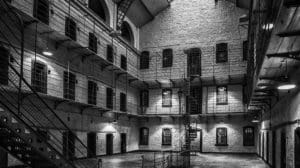Ancient Civilisations of the Americas: Unveiling Maya, Aztec, and Inca Secrets

Updated On: April 23, 2024 by Eman Sameh
The ancient civilisations of the Americas were once home to some of the most advanced and enigmatic societies the world has ever seen. The Maya, Aztec, and Inca civilisations each boasted unique achievements and innovations that continue to fascinate scholars and history enthusiasts alike. With their mysterious origins, these cultures dominated large swathes of Central and South America before the arrival of Europeans. The Maya, known for their sophisticated writing system and astronomical knowledge, left behind impressive stone cities and temples that are intriguing windows into their once-thriving society.

In the Valley of Mexico, the Aztec empire rose to prominence through strategic alliances and military conquests, creating an expansive and complex state with Tenochtitlan, their splendid capital, at its heart. Meanwhile, the Inca Empire, with its intricate road systems and monumental architecture, spanned the Andes and developed an organised society capable of supporting a vast population. Each of these civilisations had intricate social hierarchies, religious rituals, and architectural masterpieces, which reflected their distinct cosmologies and worldviews.
Ancient Civilisations of the Americas
Before the renowned Maya, Aztec, and Inca civilisations, there were advanced societies in the Americas whose origins and innovations laid the foundations of urbanisation and culture in the Western Hemisphere.
The Olmec Legacy
The Olmec civilisation, often considered the “Mother Culture” of Mesoamerica, emerged around 1350 BCE in what is now the modern Mexican state of Veracruz. Their society is credited with crucial developments such as monumental architecture, complex urban planning, and the first written language in the Americas. Significant remains of their legacy include colossal stone heads and intricate jade carvings, evidencing an organised and artistic culture. The Olmecs were pivotal in shaping the religious and cultural practices that infused the subsequent civilisations in the region.
Rise of City-States
In the centuries following the decline of the Olmec, Mesoamerica witnessed the emergence of independent city-states. These city-states, like those that would eventually constitute the Maya civilisation, were characterised by their sophisticated governance structures, extensive trade networks, and monumental building projects. Featuring stepped pyramids, plazas, and temples, the architecture of these city-states reflects both the societal hierarchy and the deep spiritual commitment of these ancient peoples. Their accomplishments in astronomy, mathematics, and calendar systems were unparalleled in their time.
The Splendour of the Maya
We delve into the accomplishments of the Maya civilisation, revealing their advancements in various spheres, most notably during the Classic Period. Their profound understanding of writing, mathematics, and astronomy stands as a testament to their legacy.
Classic Period Flourish
During the Classic Period, roughly from the years 250 to 900 AD, the Maya civilisation experienced an unprecedented expansion in Mesoamerica, particularly across areas of modern-day Guatemala and Belize. Monumental cities like Tikal and Chichen Itza rose to prominence, showcasing the Mayans’ refined architectural prowess with their sophisticated pyramid temples, palaces, and observatories.
- Tikal served as a potent political, economic, and military hub, its temples becoming iconic symbols of Maya civilisation.
- Chichen Itza, recognised for the famous El Castillo pyramid, was a centre of diverse influences and witnessed significant advancements in architectural styles.
These urban centres illustrate a society thriving through trade, agriculture, and the integration of various city-states under the governance of dynamic rulers.
Mysteries of Maya Script
The Maya script, the most sophisticated and highly developed writing system of pre-Columbian Americas, has been partly deciphered and offers insights into historical events, dynastic records, and Maya mythology. Artefacts and remaining codices have significantly enhanced our understanding of the Maya script, fostering a deeper appreciation for its complex linguistic achievements.
| Maya Codices | Description |
|---|---|
| Dresden | Astronomy and Rituals |
| Madrid | Divination and Rituals |
| Paris | Possibly concerned with prophecy |
| Grolier | Astrological manuscript, authenticity debated |
Though few in number, these codices continue to be valuable resources for uncovering the depth of Maya intellectual culture.
Mathematics and Astronomy
The Maya also excelled in mathematics and astronomy, devising a vigesimal (base-20) numeral system and astronomical calibrations that could predict celestial events with remarkable accuracy. Key achievements include:
- The development of the zero concept in mathematics is an innovative idea for the time.
- The Long Count calendar was used to track vast periods of time, evidence of which is inscribed on many monuments.
The sophistication of their mathematical system allowed them to build intricate calendars, such as the Tzolk’in and Haab’, which regulated agricultural, ceremonial, and administrative activities within their society. Mathematics and astronomy were not only practical tools but also deeply intertwined with their cosmology and rituals.
Aztec Dominance in the Valley of Mexico
In the heart of what is now Mexico City, the foundations of Aztec civilisation lay, where their capital, Tenochtitlan, stood as a testament to their ingenuity and might. As we explore their dominance in the Valley of Mexico, we discover a society rich in art and religion and a formidable Triple Alliance that extended their influence far beyond their city’s island shores.
Tenochtitlan: The Venice of the New World
Tenochtitlan, the capital of the Aztec civilisation, was a marvel of engineering and urban planning. Built on an island in Lake Texcoco, the city was interlaced with canals that allowed for efficient transport and trade, earning it the moniker of the Venice of the New World. This bustling metropolis was the centre of the Aztec world, symbolic of their dominance in the region and the heart from which their power pulsed.
Art and Religion in Aztec Society
Art and religion were deeply intertwined within Aztec society, serving as both an expression of cultural identity and a means of honouring their deities. Temples soared towards the sky, elaborate and adorned with precious metals and stones, standing as monuments to the gods they worshipped. Human sacrifice played a pivotal role in their religious ceremonies, which were believed to appease the gods and ensure the continuation of the world.
The Aztec Triple Alliance
The might of the Aztecs was in part due to the establishment of the Triple Alliance between Tenochtitlan, Texcoco, and Tlacopan. This alliance consolidated power and expanded territorial control through skilful warfare and strategic marriage alliances. Working as a unified force, the Aztecs exerted control over neighbouring states, amassing tribute and wealth that fuelled their empire’s expansion and dominance in the Valley of Mexico.
The Mighty Incan Empire
We must recognise the Incan Empire as one of the most powerful and sophisticated civilisations in pre-Columbian South America. With architectural innovations, advanced agricultural practices, and a complex administrative structure, their legacy is deeply rooted in the fabric of Andean society.
Engineering Marvels of the Incas
Our appreciation for Inca engineering begins with their astonishing architectural achievements. Seldom matched even today, their monumental structures were a blend of beauty, precision, and practicality. The Inca were masters in stonework, erecting expansive settlements and fortresses with intricate, mortarless masonry that withstood the testing environment. Their road system was another breakthrough, featuring over 40,000 kilometres of pathways, connecting Cuzco to the farthest edges of the empire, embodying an infrastructure marvel that enhanced communication and cohesion across diverse terrains.
Cuzco: The Imperial City
Cuzco, the heart of the Inca Empire, stood as a testament to their power and creativity. This imperial city laid claim to grand palaces, temples, and plazas, which were utilised not only for governance but also for ceremonial purposes. A focal point was the Coricancha, or the Temple of the Sun, showcasing the Inca’s religious devotion and the centrality of solar worship in their culture. Imposing walls like those of Sacsayhuamán bordered the city, symbolising the Incan prowess in construction and their strategic acumen in defence.
The Inca’s Ingenuity in Agriculture
Our insights into agriculture reveal just how the Inca thrived in a challenging environment. They developed terrace farming, a series of stepped fields carved into the mountainsides, maximising arable land and combatting soil erosion. Advanced irrigation techniques ensured that crops such as maize and quinoa received an efficient water supply. The Inca employed a unique record-keeping system using quipus, an assemblage of knotted strings, which allowed them to manage agricultural production, state affairs, and the labour force with remarkable efficiency.
Through these far-reaching endeavours, we recognize the Inca’s exceptional capability to innovate and adapt, cementing their legacy as a dominant and ingenious force in ancient South America.
Religious Beliefs and Practices
In the ancient Americas, the spiritual realm was considered a crucial aspect of life, influencing daily activities, politics, and society. The Mayans, Aztecs, and Incas each had their own complex religious systems, but they shared a deep reverence for deities and rituals, including practices like human sacrifice.
Mayan Deities and Cosmos
The Maya civilisation maintained a pantheon of gods that interwoven with its understanding of the cosmos. Central to its belief system were the deities representing natural elements and celestial bodies, each playing a crucial role in the balance of the universe. Its rituals often reflected this cosmic order, tightly linking human actions with celestial events. Texts such as the Popol Vuh detailed the creation of the world and mankind’s place within it, relying on the presence of divine forces that imbued every aspect of Mayan life with sacredness.
Aztec Gods and Human Sacrifice
In Aztec religion, gods governed the forces of nature and the destiny of humanity, demanding reverence and tribute. One of the central figures was the sun god, Huitzilopochtli, who required human blood to battle the darkness, a belief that justified the practice of human sacrifice. Aztec rituals, though varying in purpose and form, often culminated in offerings to appease their gods and ensure the continuity of the world. Artefacts and codices, such as the Aztec Calendar Stone, reveal the vast array of gods, each necessitating specific ceremonies and sacrifices.
Incan Ancestor Worship
Ancestor worship played a pivotal role in Incan society, with mummified remains of rulers treated as intermediaries to the divine. In addition to these venerated ancestors, the Incas worshipped an array of deities, including Inti, the sun god, and Pachamama, the earth mother. Their rituals ensured agricultural prosperity and societal harmony, integrating religion into the governance and expansion of their empire. The Incas’ sophisticated system of beliefs and practices fostered a reciprocal relationship with the gods, mediated by priests at sacred sites like Machu Picchu.
Highlighting the Architectural Wonders

In our exploration of ancient Americas, we uncover the grandiose architectural feats of the Maya, Aztec, and Inca civilisations. Each structure stands as a testament to their engineering prowess and spiritual significance.
Pyramids of the Maya
The Maya civilisation, renowned for its sophisticated culture and mathematics, erected pyramids that have stood the test of time. Notable amongst these is the pyramid at Palenque, a marvel of construction that harmoniously blends with the encompassing landscape. This architectural splendour demonstrates the Maya’s advanced understanding of astronomy and urban planning.
- Location: Palenque, Mexico
- Significance: Astronomical observations and religious ceremonies
Majestic Temples of the Aztecs
The Aztec empire, with its powerful city-states, was adorned with imposing temples that reached towards the sky. These structures were not just buildings but a canvas for the Aztecs’ rich cosmology and a focal point for their civic and religious activities. The Templo Mayor, at the heart of Tenochtitlan, is a poignant example, reflecting the Aztecs’ innovative and symbolic architectural expression.
- Location: Tenochtitlan (modern-day Mexico City)
- Function: Religious ceremonies and tribute to the gods
Inca Fortresses and Sacred Spaces
Lastly, the Inca civilisation created impeccably constructed fortresses and sacred spaces in challenging mountainous terrains. The pinnacle of Inca innovation is Machu Picchu, an architectural wonder that served both as a royal estate and a retreat for spiritual leaders. Its construction techniques and strategic location remain an enigma, encapsulating the magnificence and mystery of Inca architecture.
- Location: Andes Mountains, Peru
- Purpose: Royal estate and ceremonial site
Social and Political Organisation
Before we examine the distinct layers of society and roles within ancient American civilisations, it’s crucial to understand that their sophisticated hierarchies and power structures were pivotal in maintaining order and facilitating the grand achievements these cultures are known for.
Hierarchy in the Americas
The Maya, Aztec, and Inca civilisations each had complex hierarchies with rulers who wielded significant authority. Kings, often seen as divine entities, sat atop the social pyramid. The Maya developed a series of politically independent city-states, each ruled by a king whose authority was undisputed within his domain. These kings presided over intricate ceremonies and were pivotal in upholding the spiritual and temporal well-being of their cities.
In contrast, Aztec society was a more centralised empire in which the king, known as the Tlatoani, reigned supreme over the various conquered lands. The king was supported by a council of nobles, priests, and military leaders. Their well-established trade networks facilitated the empire’s expansion, spreading their influence across Mesoamerica.
The Inca empire operated under a theocratic monarchy, in which the Sapa Inca was not only the king but also considered a god on Earth. His realm was unified in its administration, achieving remarkable territorial cohesion.
The Various Roles in Society
Diverse roles ensured the smooth operation of these societies. In Maya society, roles ranged from specialised craftsmen to farmers who provided the necessary sustenance for the population. The Aztecs had an established class of traders known as Pochteca, who not only engaged in commerce but also acted as spies and emissaries, weaving a vast network of trade and information throughout the empire.
The Inca empire had a unique labour system known as mita, obliging subjects to work on infrastructure projects or in the mines, which was a form of tax. Across these civilisations, the majority of the people were farmers, providing the backbone for the society’s sustenance and economic activity.
Cultural Innovations
In the rich tapestry of ancient American civilisations, the Maya, Aztec, and Inca cultures stand out for their remarkable contributions to art, writing, and agriculture. These innovations continue to fascinate us, shedding light on the sophisticated societies of yesteryears.
Influence of Art Across Civilisations
The role of art in the Maya, Aztec, and Inca societies went beyond aesthetic expression; it was a language that conveyed the values, myths, and prowess of these ancient peoples. Mayan art is renowned for its intricate carvings and vibrant frescoes depicting rulers, gods, and daily life. Similarly, Aztec art included beautifully crafted sculptures and featherworks that were symbols of power and religion. The Inca, known for their masonry, left a legacy of stone structures and metalwork that reflect a high level of craftsmanship and design.
The Evolution of Writing Systems
The Maya civilisation developed a sophisticated writing system combining logograms and syllabic characters, enabling them to record historical events, astronomical observations, and mythology. Although the Aztecs used a form of pictographic writing, their codices were instrumental in understanding their histories and cultures post-contact. Meanwhile, the Inca used an intricate system known as quipu, a series of knots on strings, for record-keeping, which played a vital role in administrating their vast empire.
Technological Advances in Agriculture
The mastery of agriculture was a cornerstone for the growth of Maya, Aztec, and Inca societies. They cultivated crops like maize, beans, squash, and quinoa, employing innovative technologies and systems. The Aztecs utilised chinampas, or floating gardens, to maximise land use and yield in the swampy regions of their empire. The Inca excelled in high-altitude farming, engineering terraces on mountainsides, and developing advanced irrigation techniques to grow crops in diverse climates. These techniques reveal a deep understanding of their environments and a sustainable approach to farming that ensured food security for their populous civilisations.
European Encounter and Conquest
The arrival of Spanish conquistadors in the Americas marked a pivotal moment in history, leading to profound changes in the ancient civilisations of the Maya, Aztecs, and Inca.
Spanish Conquistadors’ Arrival
In 1519, Hernán Cortés landed on the shores of what is now Mexico, commanding a force determined to open the way for Spanish colonization. With military prowess, political manipulation, and the unforeseen aid of disease, these Spanish conquistadors laid the groundwork for the fall of local empires.
Destruction and Cultural Collapse
The Aztec Empire, led by Montezuma II, fell victim to a combination of Spanish military technology, indigenous allies, civil war, and a devastating outbreak of smallpox. By 1521, the Aztec capital Tenochtitlán had succumbed to the Spanish forces. Similarly, the mighty Inca encountered their downfall shortly after the arrival of Francisco Pizarro. Already weakened by a civil war between Atahualpa and Huáscar, the Inca Empire was ill-prepared to resist the Spanish onslaught, leading to its collapse and Spain’s eventual domination over the Andean region.
Legacy and Decline

Examining the ancient civilisations of the Americas, such as the Maya, Aztec, and Inca, we uncover reasons for their decline while also recognising their lasting influence on modern culture.
Reasons for the Decline
Several factors contributed to the decline of the Maya, Aztec, and Inca civilisations. Among the Maya, patterns of drought and resource depletion, exacerbated by deforestation and soil erosion, placed enormous stress on their society, leading to a period referred to as the Post-Classic era, marked by increased warfare and political instability. For the Aztecs and Incas, the arrival of Spanish conquistadors with advanced weaponry and diseases to which the indigenous populations had no immunity signalled an end to their dominions.
Mayan Decline
- Environmental Stress: Drought and resource scarcity
- Socio-political Instability: Warfare and fragmentation during the Post-Classic period
Aztec & Inca Decline
- European Contact: Diseases and conquest
The Lasting Impact on Modern Culture
The ingenious legacies of these ancient civilisations continue to permeate modern culture, evident in various aspects of life. The Mayans’ advancements in astronomy and mathematics influenced our understanding of time, as seen in their intricate calendar systems, while their glyphic writing contributed to the study of linguistics. Meanwhile, the Aztecs’ agricultural achievements, most notably the development of chinampas or “floating gardens,” showcase sustainable farming techniques that inspire current agricultural practices. The Inca’s masterful road systems and architecture, like the fabled Machu Picchu, offer timeless examples of sophisticated engineering and urban planning.
Maya
- Calendar and mathematical systems
- Glyphic writing
Aztec
- Agriculture: Chinampas
- Cultural influences: Art and mythology
Inca
- Engineering and architecture
- Road networks
Frequently Asked Questions
In this section, we explore some pressing inquiries surrounding the distinctive aspects of the Maya, Aztec, and Inca civilisations, their societal norms, and their incredible accomplishments in various fields.
How did the Maya, Aztec, and Inca civilisations differ in their political structures?
The Maya civilisation was organised into city-states, each ruled by a king and a complex hierarchy. In contrast, the Aztec civilisation was an empire led by a single emperor who wielded absolute power. The Inca civilisation’s political system was highly centralised, with the Sapa Inca at the top, followed by a well-structured administration that maintained control over a vast and diverse empire.
In what ways did the religious beliefs of the Maya, Aztec, and Inca cultures manifest in their societies?
Religion was integral to all three societies, influencing their daily lives, politics, and cultural practices. The Maya had a pantheon of gods and deeply spiritual rituals, while the Aztec religion involved complex ceremonies and human sacrifices to appease their gods. The Inca held the Sun God, Inti, in high esteem and engaged in elaborate rituals to honour their deities.
What were the primary economic activities of the Maya, Aztec, and Inca civilisations?
The Maya excelled in agriculture, particularly in cultivating maize, beans, and squash. The Aztec economy was based on agriculture and tribute from conquered peoples. The Inca civilisation was renowned for its extensive road network that facilitated trade and integration across diverse terrains, in addition to its advanced agricultural techniques like terrace farming.
Can you outline the significant achievements in architecture and engineering among the Maya, Aztecs, and Incas?
The Maya were known for their impressive step pyramids and observatories. The Aztec’s crowning architectural achievement was the grand city of Tenochtitlán, with its extensive canals and temples. The Inca is celebrated for their engineering feats, which include the construction of Machu Picchu, the vast road system, and their innovative agricultural terraces.
What were the major causes and effects of the decline of the Maya, Aztec, and Inca empires?
The decline of the Maya empire is still shrouded in mystery, but it is thought to include environmental factors and internal strife. The Aztec Empire succumbed to Spanish invaders and diseases like smallpox. The Inca Empire’s downfall was precipitated by Spanish conquest, civil war, and the spread of diseases.
How did the Maya, Aztec, and Inca civilisations contribute to the knowledge of astronomy and mathematics?
The Maya made significant advances in astronomy and developed a detailed calendar system. They also used the concept of zero, which was critical for their mathematical calculations. The Aztecs and Inca also had strong astronomical beliefs, which informed their agricultural practices and rituals. The expertise of these civilisations in various disciplines is a testament to their sophisticated intellect and understanding of the world.






